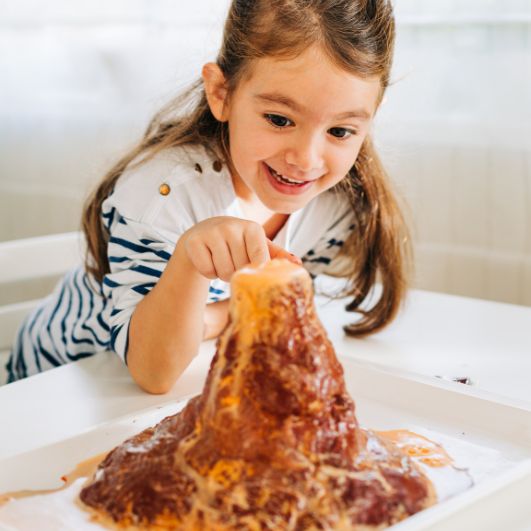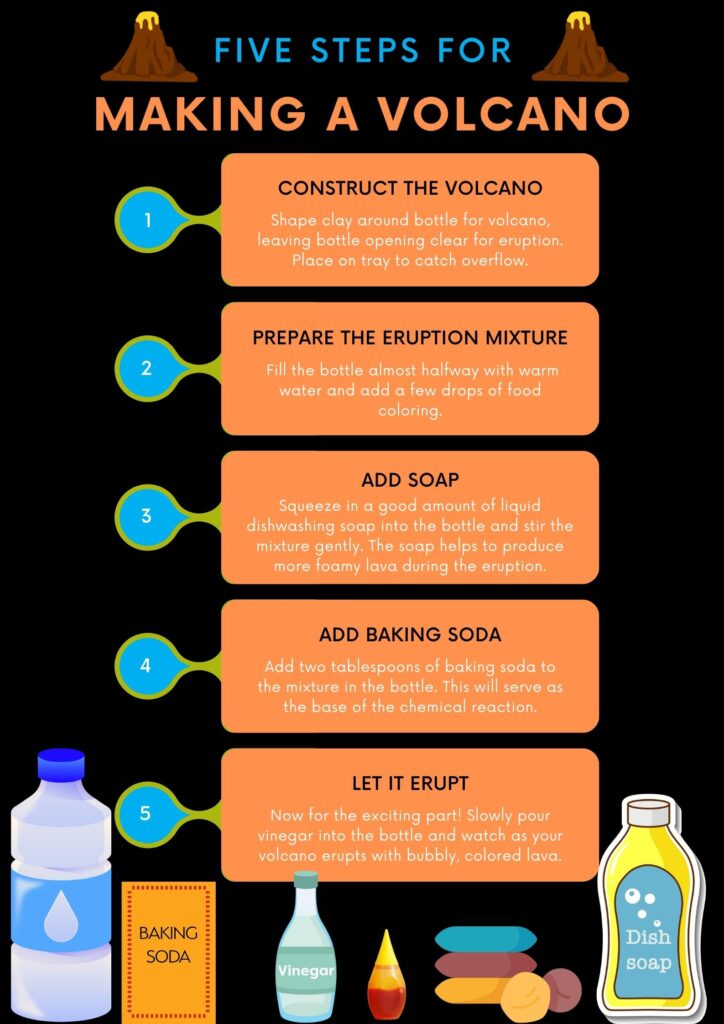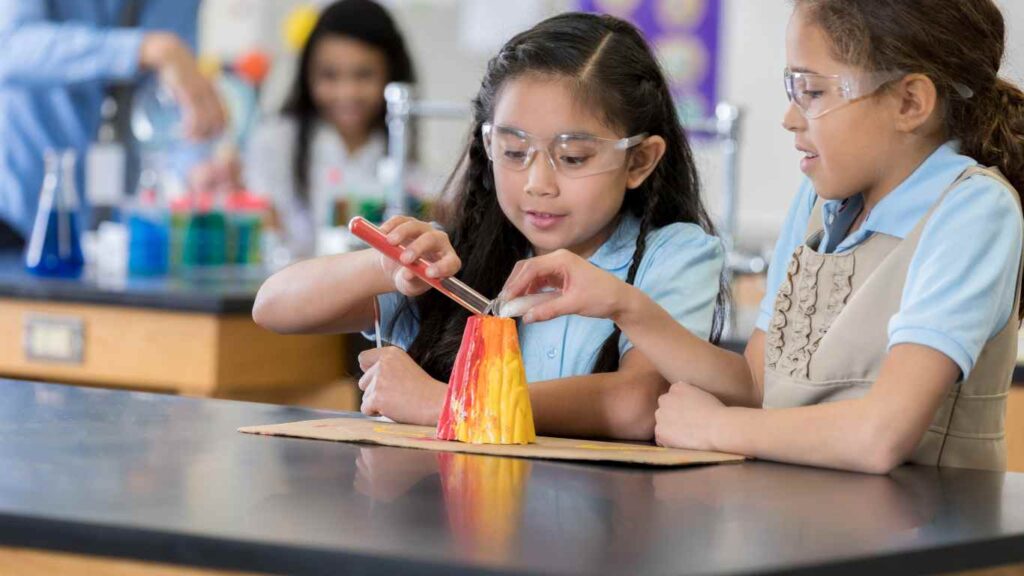Creating a volcano experiment is a classic science lab project that offers a spectacular display of chemical reactions. This interactive project offers not just a stunning visual display but also serves as an enriching learning experience, showcasing the concepts of chemical reactions, pressure dynamics, and the study of Earth sciences. Below is a guide to crafting your very own erupting volcano, perfect for students, teachers, and anyone with a curiosity about how these magnificent natural phenomena can be modeled at a small scale.

Materials Needed for Volcano experiment:
- A small bottle or container (this will be the volcano’s “chamber”)
- Baking soda (sodium bicarbonate)
- Vinegar (acetic acid)
- Liquid dishwashing soap
- Water
- Food coloring (red or orange for a lava-like effect)
- Modeling clay or playdough (to mold the volcano)
- Tray or a large plate (to catch the overflow)
- Safety goggles (always wear goggles when performing any experiment)
IMPORTANT: Ensure your child wears goggles and is always under adult supervision for their safety while performing the volcano experiment.
Instructions For the Experiment
Construct the Volcano:
Use the modeling clay or playdough to make a cone shape of a volcano around the bottle. Don’t put clay on the bottle’s opening as this will be the crater from which your volcano will erupt. Place your volcano bottle on the tray or large plate to catch any overflow and avoid the table getting dirty.
Prepare the Eruption Mixture:
Fill the bottle almost halfway with warm water and add a few drops of food coloring.
Add Soap:
Add in a good amount of liquid dishwashing soap into the bottle and stir the mixture gently. The soap helps to produce more foamy lava during the eruption.
Add Baking Soda:
Add two tablespoons of baking soda to the mixture in the bottle. This will act as the base of the chemical reaction.
Let it Erupt:
Now for the exciting part! Slowly pour vinegar into the bottle and watch as your volcano erupts with bubbly, colored lava.

Volcano Experiment Explained:
This experiment simulates a volcanic eruption through a chemical reaction between baking soda (a base) and vinegar (an acid). When these substances mix, they react to form carbonic acid, which immediately decomposes into water and carbon dioxide gas. The carbon dioxide gas builds up pressure inside the bottle until it pushes the mixture out, mimicking a volcanic eruption. The dish soap added to the mixture helps create more foam, making the eruption even more spectacular.
Variations of the Volcano Experiment:
Experiment with Proportions:
Change the amounts of baking soda, vinegar, and dish soap to see how it affects the eruption’s size and duration.
Color Variations:
Use different food coloring to simulate different colors of volcanic eruptions or lava flows.
Surface Textures:
Modify the surface of your volcano with paint, real rocks, and sand to make it more realistic.
Eruption Strength:
To increase the strength of your eruption, you can experiment with adding a spoonful of dry yeast to the vinegar before adding it to the baking soda solution. The yeast accelerates the production of carbon dioxide gas, resulting in a more vigorous eruption.
This volcano experiment is a fascinating way to bring the dynamic processes of the Earth to life. It allows participants to engage directly with the materials and witness the exciting reactions that occur. Whether you’re conducting this experiment at home, at school, or as part of a science fair project, it’s sure to provide an educational and entertaining experience for everyone involved.

